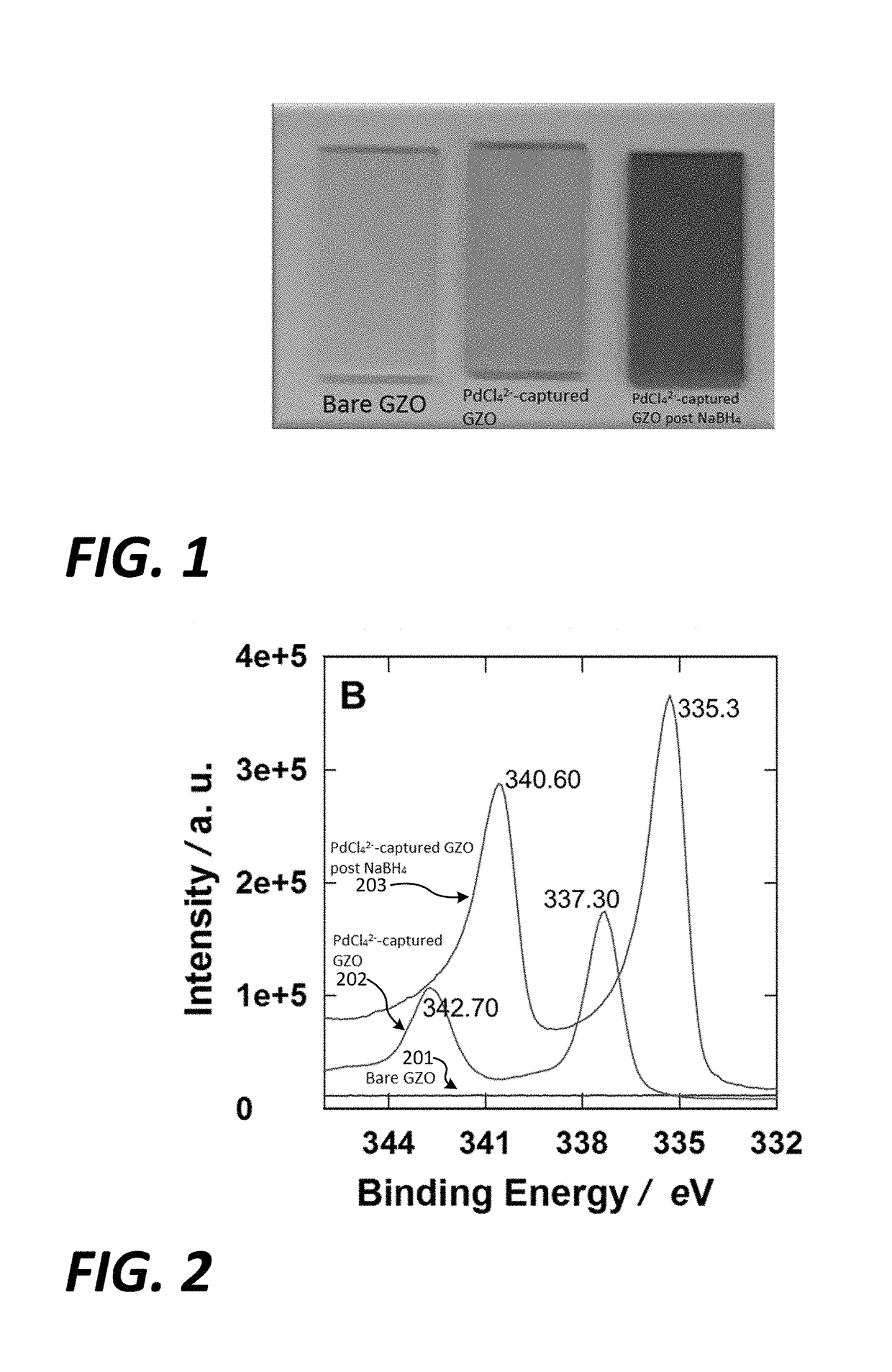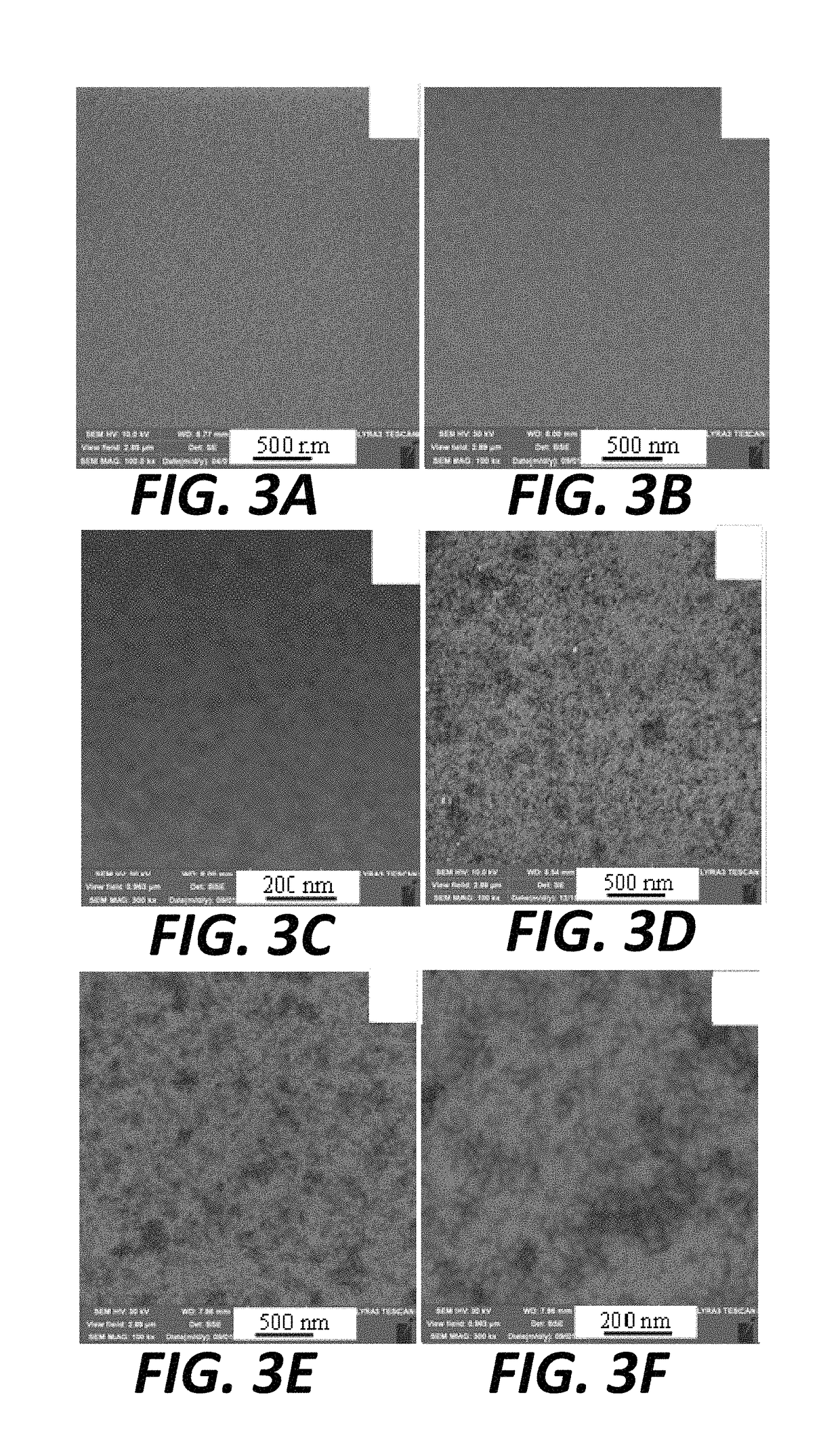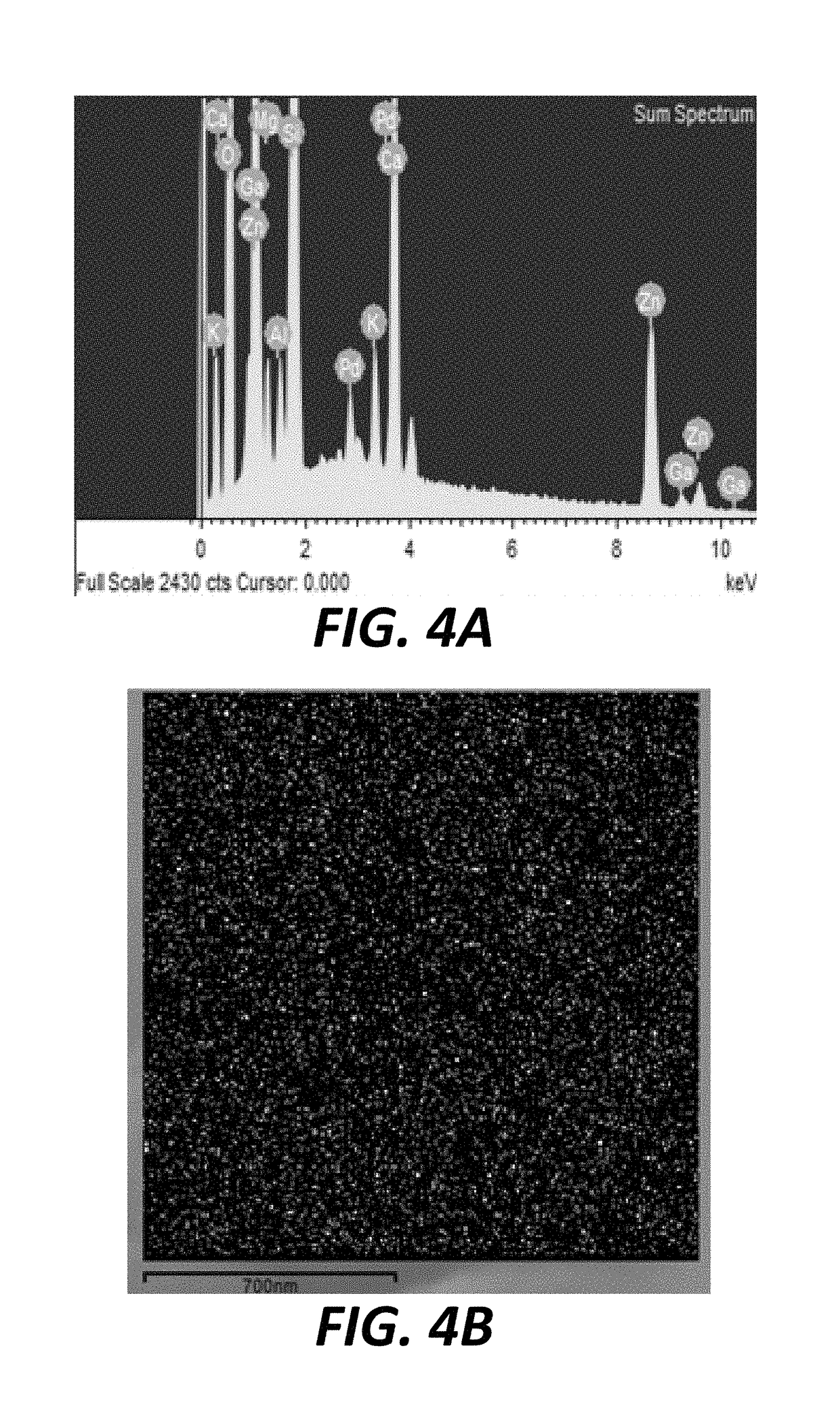Method for preparing a gallium-doped zinc oxide electrode decorated with densely gathered palladium nanoparticles
a technology of palladium nanoparticles and galliumdoped zinc oxide, which is applied in the direction of electrode coating, electrolytic organic oxidation, electrodes, etc., can solve the problems of azo and gzo, which have not been extensively examined in voltammetric analysis
- Summary
- Abstract
- Description
- Claims
- Application Information
AI Technical Summary
Benefits of technology
Problems solved by technology
Method used
Image
Examples
example 1
[0072]In the conditions tested to prepare Palladium nanoparticles (PdNPs) on GZO electrodes, PdCl42− could be captured on the GZO surface simply by immersing the GZO electrode in a solution of K2PdCl4. Capture of PdCl42− molecules appeared to be significant since a blackish-violet-colored GZO electrode was produced in a follow-up reduction reaction in the presence of NaBH4, as depicted in FIG. 1. The blackish-violet-color was observed for aluminum-doped zinc oxide (AZO) electrode however the same change of color never proceeded on an indium tin oxide (ITO) electrode which indicated that PdCl42− capture was not successful on the ITO electrode.
Materials and Methods
Reagents
[0073]Potassium tetrachloropalladate(II) (K2PdCl4), sodium hydroxide, potassium chloride (KCl), hydrogen peroxide (30% w / v) (H2O2), catechol (CT), hydroquinone (HQ), and potassium ferrocyanide (K4[Fe(CN)6]) were obtained from Sigma-Aldrich (USA). Ethanol was supplied by Carlo Erba Reagents (France). Sodium borohydrid...
example 2
Results and Discussion
Preparation, Chemical Composition, and Morphological Characteristics of PdNP-GZO
[0076]Initially, the bare GZO electrode was immersed in an aqueous solution containing 1 mM K2PdCl4 to capture the dianionic tetrachloropalladate (PdCl42−) ions. After washing and drying, the color of the GZO electrode was yellow (FIG. 1), which approximated the color of an aqueous solution of K2PdCl4 and differed significantly from the glass-like color of the original GZO electrode (FIG. 1). The significant color change indicated the capture of sufficient amounts of PdCl42− on the GZO electrode surface 202, as further confirmed by XPS analysis (FIG. 2). The background XPS spectrum in FIG. 2 corresponds to the bare GZO electrode 201. The two peaks at 342.70 and 337.30 eV in the PdCl42− / GZO electrode spectra 202 (FIG. 2) were attributed to Pd 3d3 / 2 and Pd 3d5 / 2, respectively, indicating the presences Pd2+ ions. The attachment of PdCl42− ions to the GZO electrode surface might be via ...
PUM
| Property | Measurement | Unit |
|---|---|---|
| diameter | aaaaa | aaaaa |
| voltage | aaaaa | aaaaa |
| peak current | aaaaa | aaaaa |
Abstract
Description
Claims
Application Information
 Login to View More
Login to View More - R&D
- Intellectual Property
- Life Sciences
- Materials
- Tech Scout
- Unparalleled Data Quality
- Higher Quality Content
- 60% Fewer Hallucinations
Browse by: Latest US Patents, China's latest patents, Technical Efficacy Thesaurus, Application Domain, Technology Topic, Popular Technical Reports.
© 2025 PatSnap. All rights reserved.Legal|Privacy policy|Modern Slavery Act Transparency Statement|Sitemap|About US| Contact US: help@patsnap.com



